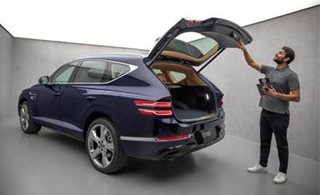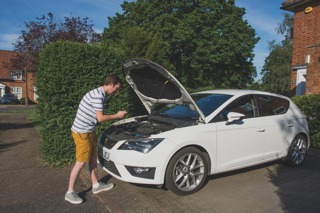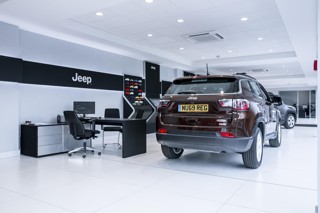It’s widely acknowledged that the majority of automotive purchase journeys now start on a website, with 75% of new and used car buyers conducting their research online*.
With fewer customers starting their search in the dealership, the challenge is how to engage with customers during the early stage of their research in order to then move them offline and into a dealership to conduct a test drive and purchase a vehicle.
Car dealers and manufacturers understand the importance of the online channel and invest significant sums in driving customers to their websites via direct mail, TV and radio ads.
And there’s been significant investment in the websites too, with car configurator tools and used car locators with car videos available.
Yet it’s all still very much self-serve, and despite the huge investment in the channel, the online experience is very impersonal – much like visiting an un-staffed car showroom.
So how can organisations optimize the online channel and meet customers early in their research and before they shop around?
Could it be less about the investment in methods to drive people to the website and more about how to interact with customers when they arrive?
And ensuring that you are able to interact with customers whichever device they use, PC, tablet or smartphone?
Add people to you website – don’t leave it un-manned 24/7
There’s a growing interest from the car industry in using real people to meet customers on the website and at the early stage of their research.
Technology advancements mean that streaming live video from a website is simple and the retail sector has been quick to take advantage of this – with many retailers now offering live video assistants who appear on your screen and can answer your queries, help you find products, co-browse the website with you and help you through the checkout process.
The car industry has made slower progress in this area, but that’s rapidly changing as organisations see that there are sound business benefits to offering a more personal service from the website, such as high conversion rates – typically, over 30% of live video chat shoppers go on to visit the showroom and conduct a test drive.
In the car leasing space, the enquiry to sale time can be as little as one hour with live video chat, rather than the usual two to three days; and customer service scores are significantly higher than with a phone-only or email-chat call.
Video chat from a smartphone offers significant advantages to text chat
Many car dealers, manufacturers and leasing companies have invested in some form of live chat, which generally involves a text-based chat between the agent and the customer.
It works reasonably well in many cases, but with a growing number of browsing sessions now coming via smartphones, text chat via a phone is not an ideal medium for offering great online service.
For a start, the screen is small and it’s fiddly to conduct a complex conversation over text messaging as, unlike with a PC, there is no keyboard; there are often long periods of silence when the agent is dealing with another customer, and it’s almost impossible for the agent to show you vehicles on their website, when you have a keyboard open on your screen.
Live video chat allows you to see the agent, chat through options and allows the agent to take control over the website browsing, leaving the customer free to engage in a real-time conversation without the inconvenience of typing messages into a phone and waiting for a reply.
Over 50% of human communication is non-verbal, and body language and eye-contact can reinforce trust and rapport.
Buying a car is a serious financial commitment and customers want to be reassured that the agent has understood their requirements, that they are dealing with a reputable organisation and that they trust the company to have listened and offered the most appropriate deal.
We know that car buyers are starting their journeys online.
We know that smart phone usage is expected to grow to 43 million phones by 2017 and we know that huge numbers of car buyers are browsing websites from a smart phone.
There’s never been a more important time to look at optimizing customer service on your website and the way in which you offer online customer service to smartphone customers
You wouldn’t leave your showroom un-manned for 10 minutes. So isn’t it time to look at staffing levels on your website? After all, that’s where you’ll find most of your customers.
*Auto Trader 2014
Author: Phil Adams (pictured), client success director, Vee24


















Login to comment
Comments
No comments have been made yet.